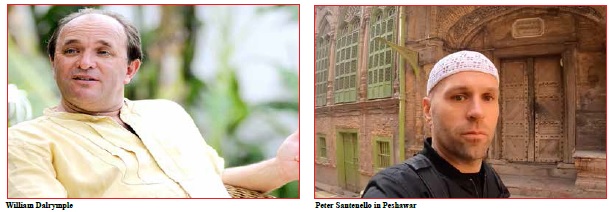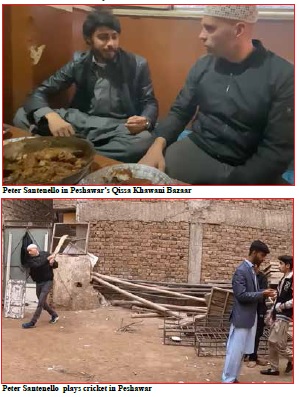Financial Times Lists Pakistan among the Twenty Places of the World to Visit
By C. Naseer Ahmad
Photos by Peter Santenello.

The Year 2020 left a record of misery and deaths for humanity, for the history books, due to the coronavirus pandemic. Pakistan surprisingly fared well, if one is to believe the official statistics or a July 17, 2020 report in the Washington Post that the country flattened the curve.
Given some of the country’s challenges such as religious intolerance, weak institutions and political instability, few would expect it to be listed among the attractive places to visit – notwithstanding the natural beauty of places like the Swat and Hunza valleys. So, it was a joy to read “Ancient Treasures in Peshawar, Pakistan”, by William Dalrymple in the Financial Times (FT) of London. In its December 12, 2020 travel section, the FT listed Pakistan as the twenty (20) places to visit in 2020.
“My most thrilling journey this year was a rediscovery rather than an encounter with something anew. In late February, just before lockdown, I returned to one of my favorite cities in the world, Peshawar, just below the Khyber Pass in Pakistan,” wrote Dalrymple. Dalrymple reminisces about his earlier visits in the area about which he has written extensively; his books “Return of a King” and “Anarchy” among the most recent. Reading the FT story, one begins to appreciate Dalrymple’s skills as a historian because he takes you along a journey which travels through centuries - to the time in “one of the world’s first university cities where Alexander the Great questioned naked sadhu-philosophers and Panini wrote his celebrate Sanskrit grammar.”

Describing the current environment in Peshawar, Dalrymple states that “the city feels safe again, its shrines, courtyard house and monuments – Buddhist, Hindu and Mughal – are undergoing restoration and its magnificent museum, which contains some of the very greatest Indo-Hellenic Gandharan sculptures to survive from the ancient world, has been given a spectacular facelift.” With a declarative sentence that follows in this article, the Scottish historian lets the reader know what is close to his heart: “Today, rather astonishingly, the Peshawar Museum is arguably the best kept, best displayed, best lit and best labelled museum of the art of early South Asia anywhere in the subcontinent.”
During the sunnier days of US-Pakistan relationship and seven years before Dalrymple was even born, Dale Kildee was studying history and political science at the University of Peshawar. He later served as a congressman from Michigan. He shared his memories of Peshawar at a community gathering organized by this author at the Rayburn House Office Building in Washington some moons ago.
In this vein there is a bit of historical note for the readers, Chris Van Hollen currently serving as the junior US Senator from Maryland was born in Karachi in 1959. He is one of twenty-nine congressional members born outside of the US and the only one who was born in Pakistan.
Peshawar’s Qissa Khawani Bazaar, the famous “story tellers’ market”, still features traditional style architecture. Famous Indian actors Dilip Kumar and Raj Kapoor were born in this area. Apart from the lives of the rich and famous, the Qissa Khawani Bazaar is the place where ordinary people have lived through the ages weathering the ravages of storms both natural and man-made.
Vitality is perhaps the story of places like the Qissa Khawani Bazaar and other neighborhoods of Peshawar and it is best told by someone who has no axe to grind or contraband to sell. Courtesy of the internet and YouTube - https://www.youtube.com/watch?v=CJnXQM8lwa0 -meet Peter Santenello describe Peshawar as the world’s “friendliest city” in his travel log of December 2019. “Welcome to Board Bazar,” says - in English - one of the merchants, who is also studying computer science while working as a tailor to pay for his education, to Peter during the visit.
“If you want to truly feel welcome as a human, come to Peshawar,” says Peter while walking the narrow streets of the old neighborhoods in this fabled city. “If you have any problem then you can call me,” says one of his newfound friends in Peshawar. “Thanks for coming,” says a teenage boy to Peter. “Merry Christmas,” says another young boy walking alongside Peter in the alleys of Peshawar on Christmas day in 2019. Being in the moment, Peter then played cricket in the dusty alleyways of the old city with the neighborhood boys.

The Greek civilization in Afghanistan and Pakistan, millenniums in the past, is now only found in the Peshawar Museum and around the world in places like the Museum of Civilization in Canada. One cannot say that the civilization has gone with the wind because certain traits from the Greeks of Afghanistan might have trickled down in the Pashtun culture, which is just as vibrant in Peshawar as it might be in Kandahar, Afghanistan. And, it is not just the blue eyes.
Through his videos you can see Peter walking the narrow streets of Peshawar, riding on the back of a motorcycle or breaking bread and sharing a meal while sitting on the floor in a local restaurant with friends he has made in the city. From the simple hospitable manner of the young Pashtuns of Peshawar one is reminded of an inscription found in the artifacts of the Greek civilization in Afghanistan in the Museum of Civilization in Gatineau, Canada thousands of miles away from Peshawar: “As a child - learn good manners; as a young man - control your passions; later in life - teach others.”
-----------------------------------------------------------------------------
Back to Pakistanlink Homepage

